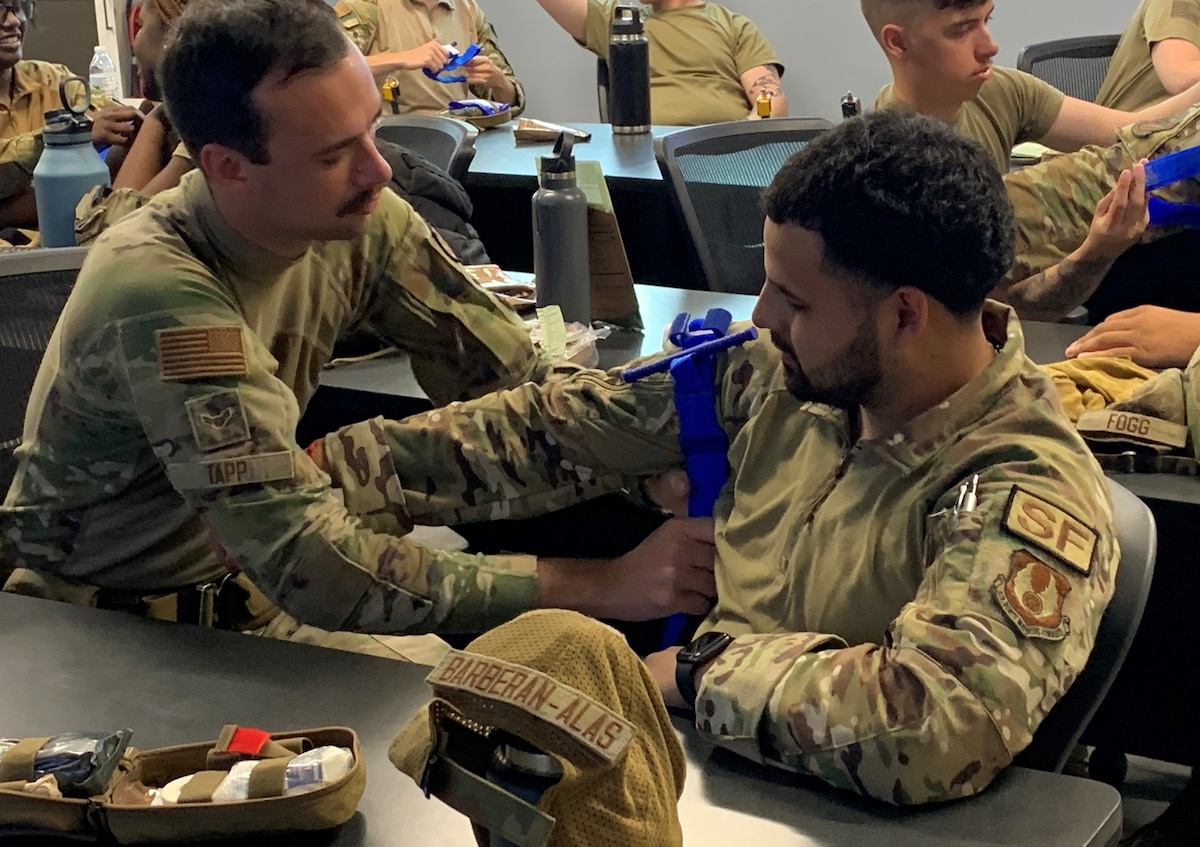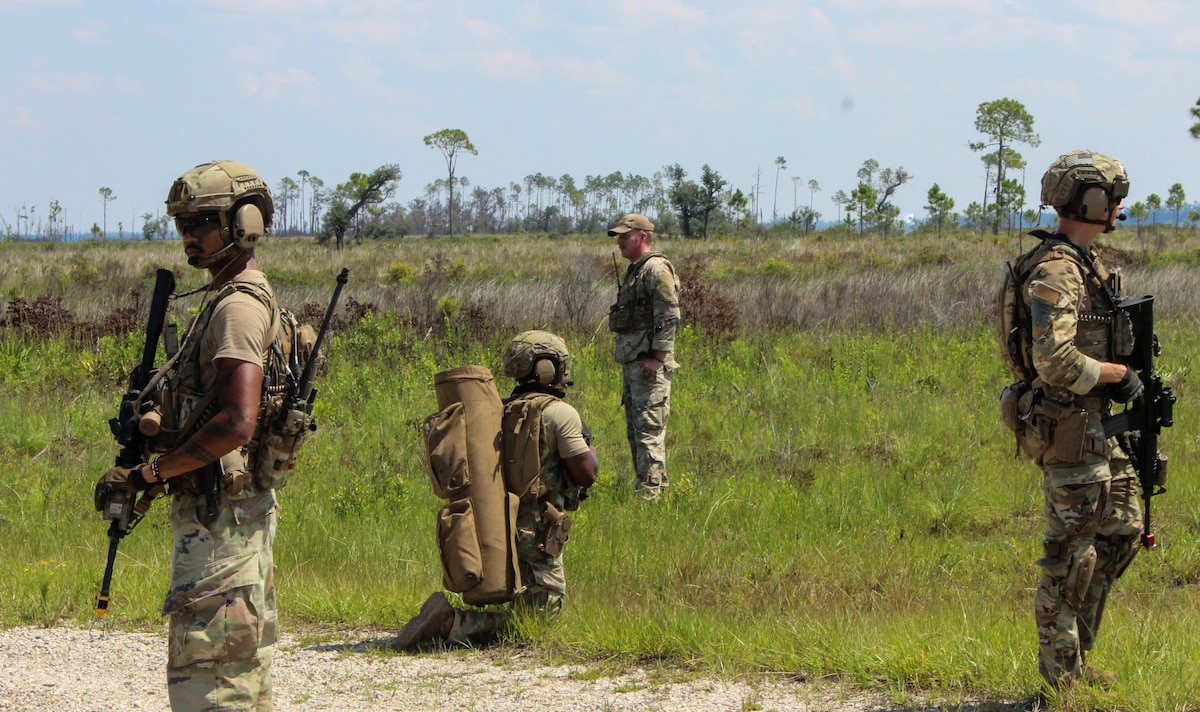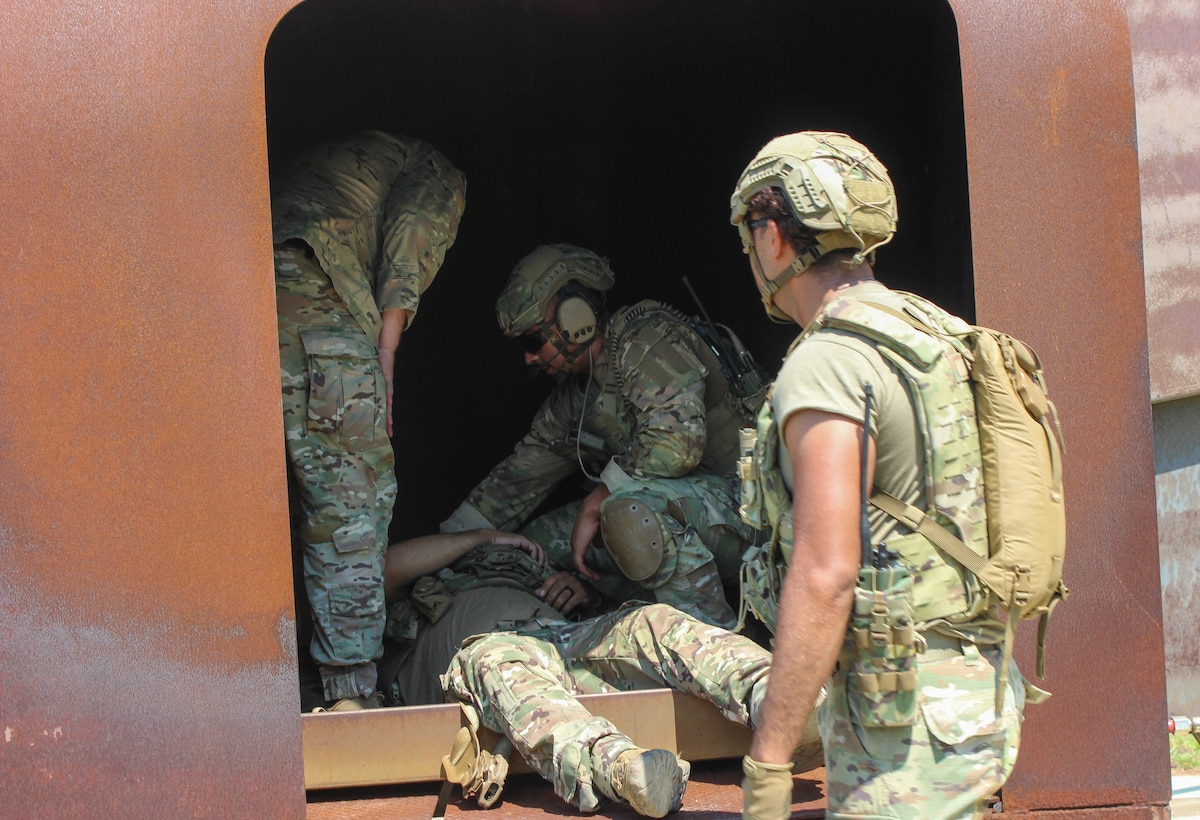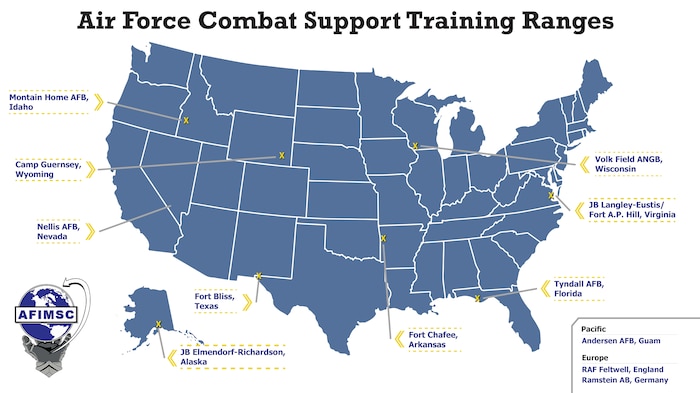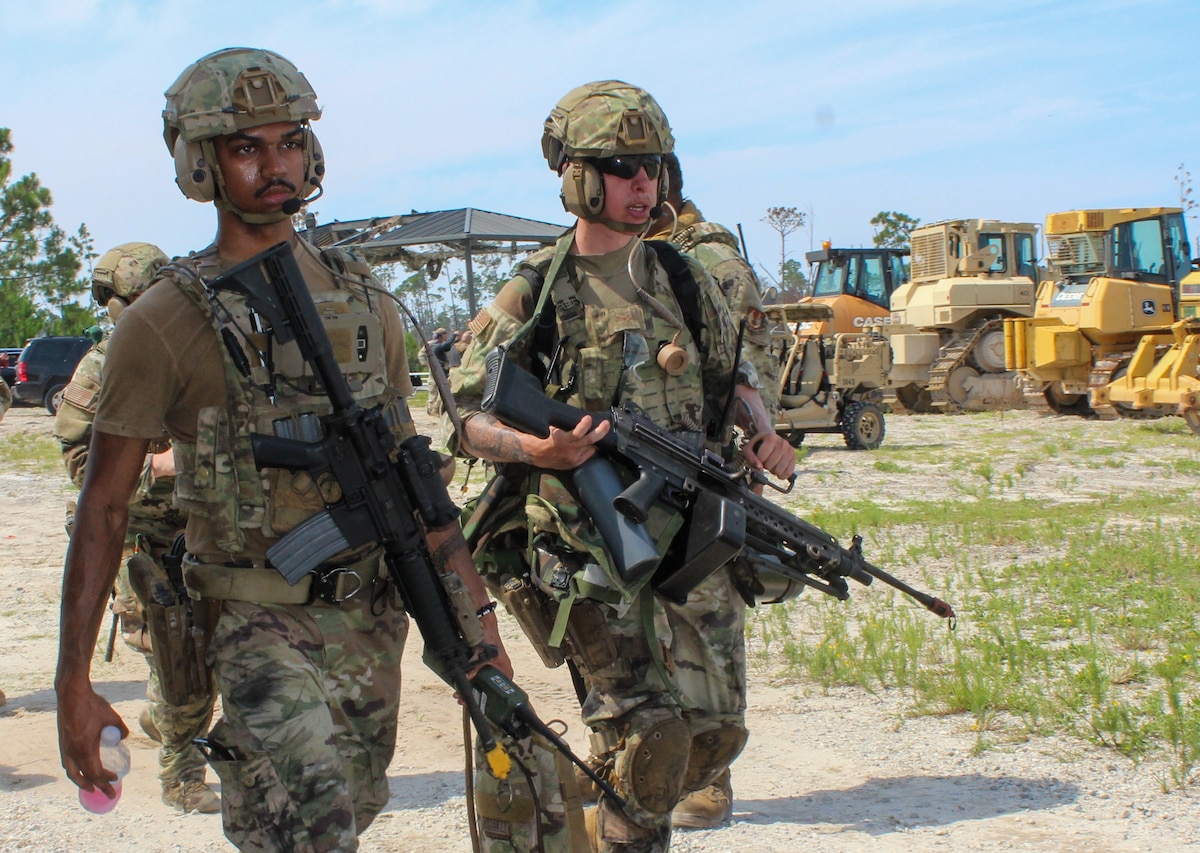The Air Force Installation and Mission Support Center moved another step forward in establishing combat support training ranges across the enterprise with a security forces-focused proof of concept exercise at the Silver Flag site on Tyndall Air Force Base, Florida, July 17-28.
As part of the CSTR concept, the exercise tested the delivery of Defender unit-led combat skills training using low-density, high-demand equipment at a new site.
Florida's 801st RED HORSE Training Squadron Silver Flag site is primarily used for civil engineer combat training.
Currently, security forces deployment training is only available at the Air Force Security Forces Center's Desert Defender Ground Combat Readiness Training Center at Fort Bliss, Texas, because it uses equipment categorized as low density, high demand, meaning it's only at select overseas locations or the Fort Bliss training site because of cost-effectiveness, said David Clifford, AFIMSC expeditionary and readiness training lead analyst and CSTR action officer.
The Tyndall proof of concept exercise involved two squads of 13 Defenders from the 78th Security Forces Squadron at Robins Air Force Base, Georgia, and the 96th SFS from Eglin Air Force Base, Florida.
It is one of several beta tests organized and funded by AFIMSC this summer as the center builds out a CSTR plan for fully equipped, multi-functional installation and mission support training sites across the Department of the Air Force. Its goal is CSTR training sites within 400 miles of most installations, giving commanders the flexibility to conduct unit-led training without having to travel long distances with troops and equipment. Thus far, nine sites are proposed in the continental U.S. and three overseas at Andersen Air Force Base, Guam; RAF Feltwell, England; and Ramstein Air Base, Germany.
Helping commanders maintain readiness and ensuring Airmen are prepared to deploy and win future wars is the focus of the CSTR initiative, said Col. Lance Turner, director of AFIMSC Expeditionary Support and Innovation Directorate.
"We don't get to win wars because of what the previous generation of Air Force leaders did," Turner said. "We win wars because of what we are doing today and how we are preparing Airmen today. That's what this is all about."
Leaders use the terms "sets and reps," Clifford said. "The CSTR locations will allow our agile combat support Airmen to complete unit-led training ... sets and reps ... on low-density, high-demand equipment unit type codes in austere field conditions.
"That's what this is about … prepping our ACS Airmen for the next high-end fight against near-peer competitors in distributed operations and theaters," Clifford said.
Previous and planned proof-of-concept events allow units to create scenarios that cover the full range of military operations, said Pervis King, counter improvised explosive device integrator at the Air Force Security Forces Center.
The exercise began with cadre from Desert Defender transporting equipment from Fort Bliss to Florida, setting it up and standing ready for security forces to begin training July 17.
The equipment, like a Base Defense Operations Center and tactical radios normally only found at Fort Bliss or in a deployed environment, allowed security forces teams to receive deployment training on mounted and dismounted patrols, base defense scenarios involving land navigation, night vision goggles, intelligence, prepping the battlespace, formations, troop movements, battle drills, urban operations and mission planning. The event ended with a field exercise and evaluation.
"Access to this equipment allows Defenders to come out and practice their full scale of operations using equipment not readily available at home station," King said. It's also an opportunity to train in austere, simulated operational environments before they are deployed to permissive or non-permissive hostile locations."
The security forces-focused event "went very well, as we'd hoped it would," he said.
"Each unit sent well-trained Airmen to oversee the training and develop lesson plans and timelines, and the squads supporting it executed it with excitement and vigor even though the heat and elements were harsh at times. They were still excited and executed at a high level," King said.
This exercise and others like it this summer serve as beta tests that allow CSTR planners to gather data and lessons learned from after-action reports.
"All of this data will allow AFIMSC to select sites, gather cost data, build our requirements and resources needed, and eventually submit that information into a program objective memorandum, or POM, to allocate future funding," Clifford said.
A final proof of concept is set for next month at Desert Defender site at Fort Bliss. The AFIMSC team will then hold a CSTR lessons-learned conference in mid-September in San Antonio to capture and discuss the data and after-action reviews.
"From there, our CSTR working group will meet sometime late May 2024 to transition the program with final site selection and a fiscal year 2026 POM build," Clifford said.

